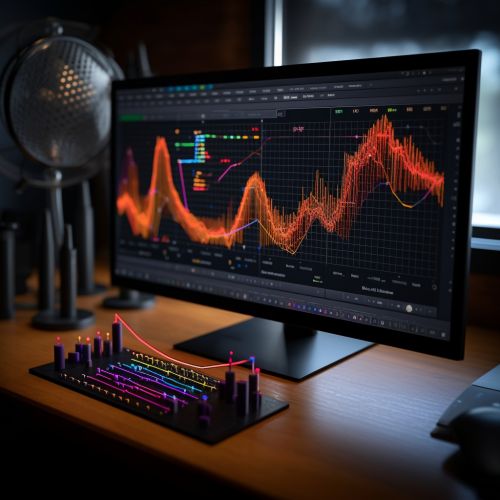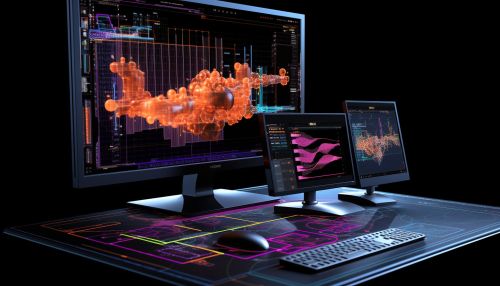Modeling and Simulation
Introduction
Modeling and simulation (M&S) is a discipline that uses mathematical models and computational algorithms to predict, understand, or analyze real-world systems. It is a powerful tool used in a wide range of fields, including engineering, physics, biology, economics, and social sciences. The process involves the creation of a mathematical model that represents the system, followed by the execution of simulations to study the behavior of the system under various conditions.


Mathematical Modeling
Mathematical modeling is the process of describing a system using mathematical concepts and language. The model serves as an abstraction of the system, capturing its essential characteristics while ignoring irrelevant details. The complexity of the model depends on the purpose of the study. For instance, a fluid dynamics model used for weather prediction may require a high level of detail, while a model used for traffic flow analysis may be relatively simple.
Types of Mathematical Models
Mathematical models can be classified into several types based on their characteristics:
- Deterministic Models: These models do not incorporate randomness. The output is fully determined by the parameter values and the initial conditions.
- Stochastic Models: These models incorporate randomness. The output is not fully determined by the parameter values and the initial conditions.
- Continuous Models: These models represent systems where changes occur continuously over time.
- Discrete Models: These models represent systems where changes occur at distinct points in time.
- Linear Models: These models assume a linear relationship between variables.
- Nonlinear Models: These models do not assume a linear relationship between variables.
Simulation
Simulation is the process of using a mathematical model to replicate a real-world system under specified conditions. It allows for the exploration of "what-if" scenarios, risk analysis, system optimization, and understanding complex phenomena. Simulations can be performed using various methods, such as Monte Carlo simulations, discrete event simulations, or agent-based simulations.
Types of Simulations
Simulations can be categorized into several types based on their characteristics:
- Static Simulations: These simulations do not consider the element of time. They are used when the system does not change over time.
- Dynamic Simulations: These simulations consider the element of time. They are used when the system changes over time.
- Deterministic Simulations: These simulations do not incorporate randomness. The output is fully determined by the parameter values and the initial conditions.
- Stochastic Simulations: These simulations incorporate randomness. The output is not fully determined by the parameter values and the initial conditions.
- Continuous Simulations: These simulations represent systems where changes occur continuously over time.
- Discrete Simulations: These simulations represent systems where changes occur at distinct points in time.
Applications
Modeling and simulation are used in a wide range of fields for various purposes. Some of the applications include:
- Engineering: M&S is used for design optimization, performance analysis, and reliability assessment of engineering systems.
- Physics: M&S is used to study complex phenomena that cannot be observed directly, such as the behavior of subatomic particles or the evolution of galaxies.
- Biology: M&S is used to understand biological systems at various levels, from molecular interactions to ecosystem dynamics.
- Economics: M&S is used to analyze economic systems, predict market trends, and evaluate policy impacts.
- Social sciences: M&S is used to study social phenomena, such as the spread of diseases, the dynamics of social networks, or the behavior of crowds.
Conclusion
Modeling and simulation is a powerful tool that allows for the analysis and prediction of complex systems. It is widely used in various fields, providing valuable insights and aiding in decision-making processes. As computational power continues to increase, the scope and complexity of models and simulations are expected to grow, further expanding the potential applications of this discipline.
